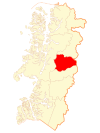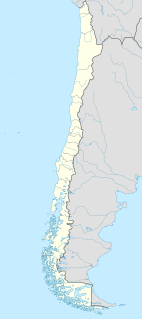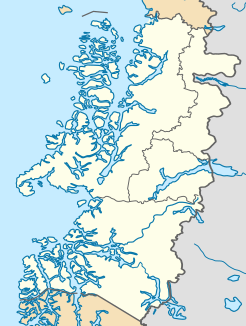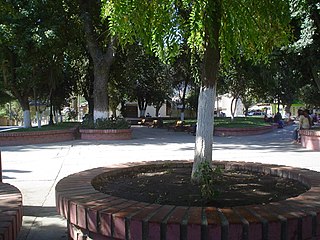| Río Ibáñez | |||||
|---|---|---|---|---|---|
| Commune | |||||
Puerto Ingeniero Ibáñez at the General Carrera Lake | |||||
| |||||
| Coordinates: 46°18′S71°56′W / 46.300°S 71.933°W Coordinates: 46°18′S71°56′W / 46.300°S 71.933°W | |||||
| Country | Chile | ||||
| Region | Aisén | ||||
| Province | General Carrera | ||||
| Seat | Puerto Ingeniero Ibáñez | ||||
| Government [1] [2] | |||||
| • Type | Municipality | ||||
| • Alcalde | Luis Alarcón Escobar (UDI) | ||||
| Area [3] | |||||
| • Total | 5,997.2 km2 (2,315.5 sq mi) | ||||
| Elevation | 218 m (715 ft) | ||||
| Population (2012 Census) [3] | |||||
| • Total | 2,208 | ||||
| • Density | 0.37/km2 (0.95/sq mi) | ||||
| • Urban | 0 | ||||
| • Rural | 2,477 | ||||
| Sex [3] | |||||
| • Men | 1,357 | ||||
| • Women | 1,120 | ||||
| Time zone | CLT [4] (UTC-4) | ||||
| • Summer (DST) | CLST [5] (UTC-3) | ||||
| Area code(s) | 56 + 67 | ||||
| Climate | Csb | ||||
| Website | Municipality of Río Ibáñez | ||||
Río Ibáñez is a commune in General Carrera Province, Aisén Region, Chile. It is named after Ibáñez River, a major tributary of General Carrera Lake.
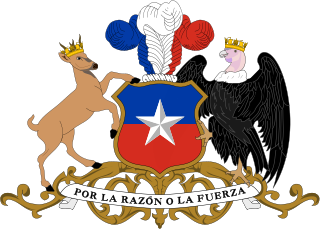
A commune is the smallest administrative subdivision in Chile. It may contain cities, towns, villages, hamlets as well as rural areas. In highly populated areas, such as Santiago, Valparaíso and Concepción, a conurbation may be broken into several communes. In sparsely populated areas, conversely, a commune may cover a substantial rural area together with several settled areas which could range from hamlets to towns or cities.

General Carrera Province is one of four provinces of the southern Chilean region of Aisen (XI). Its capital city is Chile Chico.

Chile, officially the Republic of Chile, is a South American country occupying a long, narrow strip of land between the Andes to the east and the Pacific Ocean to the west. It borders Peru to the north, Bolivia to the northeast, Argentina to the east, and the Drake Passage in the far south. Chilean territory includes the Pacific islands of Juan Fernández, Salas y Gómez, Desventuradas, and Easter Island in Oceania. Chile also claims about 1,250,000 square kilometres (480,000 sq mi) of Antarctica, although all claims are suspended under the Antarctic Treaty.
Contents
The commune includes the localities of Puerto Ingeniero Ibáñez, Villa Cerro Castillo, Bahía Murta, Puerto Eulogio Sánchez and Puerto Río Tranquilo.

Puerto Ibáñez is a small town in the Aisén Region in the south of Chile. It is located on a bay off the north shore of General Carrera Lake, 116 kilometres (72 mi) south of Coihaique. In the 2002 census it had a population of 757. It is the capital of the commune of Río Ibáñez.


